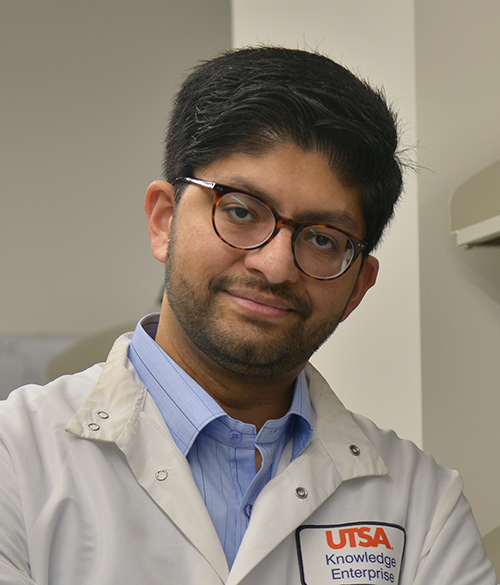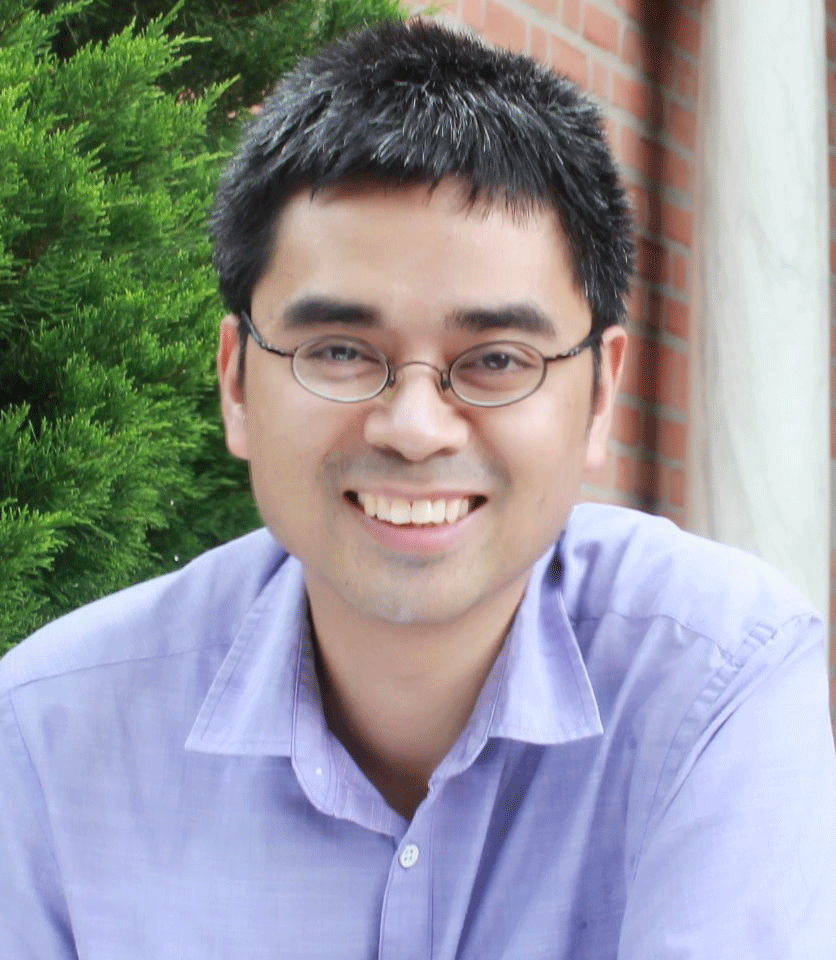
NOVEMBER 14, 2024 — Two UTSA researchers will develop proposals over the next six months that NASA hopes to use to get humans back into space.
Vu Hoang, an assistant professor of mathematics in the UTSA College of Sciences, and Shrihari “Shri” Sankarasubramanian, assistant professor of biomedical and chemical engineering in the Margie and Bill Klesse College of Engineering and Integrated Design, each received a $50,000 grant from NASA. The awards are specifically for STEM projects at minority-serving institutions (MSIs).
“Grants like this help to extend the duration of the time we can spend exploring our nearest celestial neighbors, the moon and Mars,” Sankarasubramanian said. “That will be enabled by technologies that let us live off the land. UTSA has a significant program in developing these technologies.”
 Shrihari Sankarasubramanian
Shrihari SankarasubramanianHis grant, the second one he’s received from NASA, is for the development of an electrochemical process to separate the hydrogen and oxygen from the ice found in craters on the dark side of the moon and under the Martian soil.
“My proposal is to split the ice into hydrogen and oxygen using an electrolyzer – a device that directly uses electricity to carry out chemical reactions,” Sankarasubramanian said. “The hydrogen could be used for fuel and the oxygen for astronaut survival.”
He is working with a company in Massachusetts that is experienced in making the electrolyzers, which is what Sankarasubramanian would need for his proposal.
“Giner Labs has an almost 40-year history with NASA,” he said. “I’m partnering with them, which will allow us to get preliminary lunar-relevant data.”
 Vu Hoang
Vu HoangIn the College of Sciences, Hoang and his team are lending their research expertise to better understand the behavior of liquids in vacuum. Astronauts need to occasionally eject fuel and other liquids safely into space, so this research helps to increase the time astronauts can spend on missions.
Hoang is collaborating with Sean Roberson, David Cantu, Gavin Cunningham and Josiah Sparks, all graduate students in the Department of Mathematics. Their project is entitled, “Hydrodynamic Stability of Jets via Neural Networks” and combines state-of-the-art tools from machine learning with hydrodynamics.
“Fluids in space can behave in ways that are strange and counterintuitive to what scientists observe on Earth,” said Hoang. “For example, when released into the vacuum of space, fluids can both evaporate and freeze at the same time.”
Hoang and his team are training deep neural networks to better understand these phase transitions within the extreme environment of space.
UTSA Today is produced by University Communications and Marketing, the official news source of The University of Texas at San Antonio. Send your feedback to news@utsa.edu. Keep up-to-date on UTSA news by visiting UTSA Today. Connect with UTSA online at Facebook, Twitter, Youtube and Instagram.
Huddle Against Hunger is a fundraising competition with Texas State that benefits our Roadrunner Pantry. Donations this week will help UTSA earn additional prize monies provided by RBFCU.
In-Person and VirtualJoin UTSA Libraries for an update on federal public access policies and how the library can assist with compliance.
Virtual EventWe invite you to join us for Birds Up! Downtown, an exciting welcome back event designed to connect students with the different departments at the Downtown Campus. Students will have the opportunity to learn about some of the departments on campus, gain access to different resources, and collect some giveaways!
Bill Miller PlazaThere are many citation managers. Which one is right for you? This workshop will explain what a citation manager is and how it can help you organize your citations, insert citations as you write your paper, and generate your bibliography.
Virtual EventPubMed is an essential database for anyone conducting biomedical or health-related research. This workshop will teach attendees how to effectively navigate this free resource and locate peer-reviewed articles using advanced search features, MeSH subject headings, and Boolean operators.
Virtual EventIn this hands-on workshop, participants will learn to setup an EndNote library, save references and PDFs, and automatically create and edit a bibliography. Attendees are encouraged, but not required, to have EndNote already installed on a personal computer.
Virtual EventJoin UTSA Libraries and Museums to learn more about the publishing discounts available for UTSA researchers. Current agreements include Elsevier, Cambridge University Press, Wiley, and more. Bring your questions and feedback for the library as we continue to pursue partnerships with publishers to reduce costs for our researchers.
Virtual EventThe University of Texas at San Antonio is dedicated to the advancement of knowledge through research and discovery, teaching and learning, community engagement and public service. As an institution of access and excellence, UTSA embraces multicultural traditions and serves as a center for intellectual and creative resources as well as a catalyst for socioeconomic development and the commercialization of intellectual property - for Texas, the nation and the world.
To be a premier public research university, providing access to educational excellence and preparing citizen leaders for the global environment.
We encourage an environment of dialogue and discovery, where integrity, excellence, inclusiveness, respect, collaboration and innovation are fostered.
UTSA is a proud Hispanic Serving Institution (HSI) as designated by the U.S. Department of Education .
The University of Texas at San Antonio, a Hispanic Serving Institution situated in a global city that has been a crossroads of peoples and cultures for centuries, values diversity and inclusion in all aspects of university life. As an institution expressly founded to advance the education of Mexican Americans and other underserved communities, our university is committed to promoting access for all. UTSA, a premier public research university, fosters academic excellence through a community of dialogue, discovery and innovation that embraces the uniqueness of each voice.